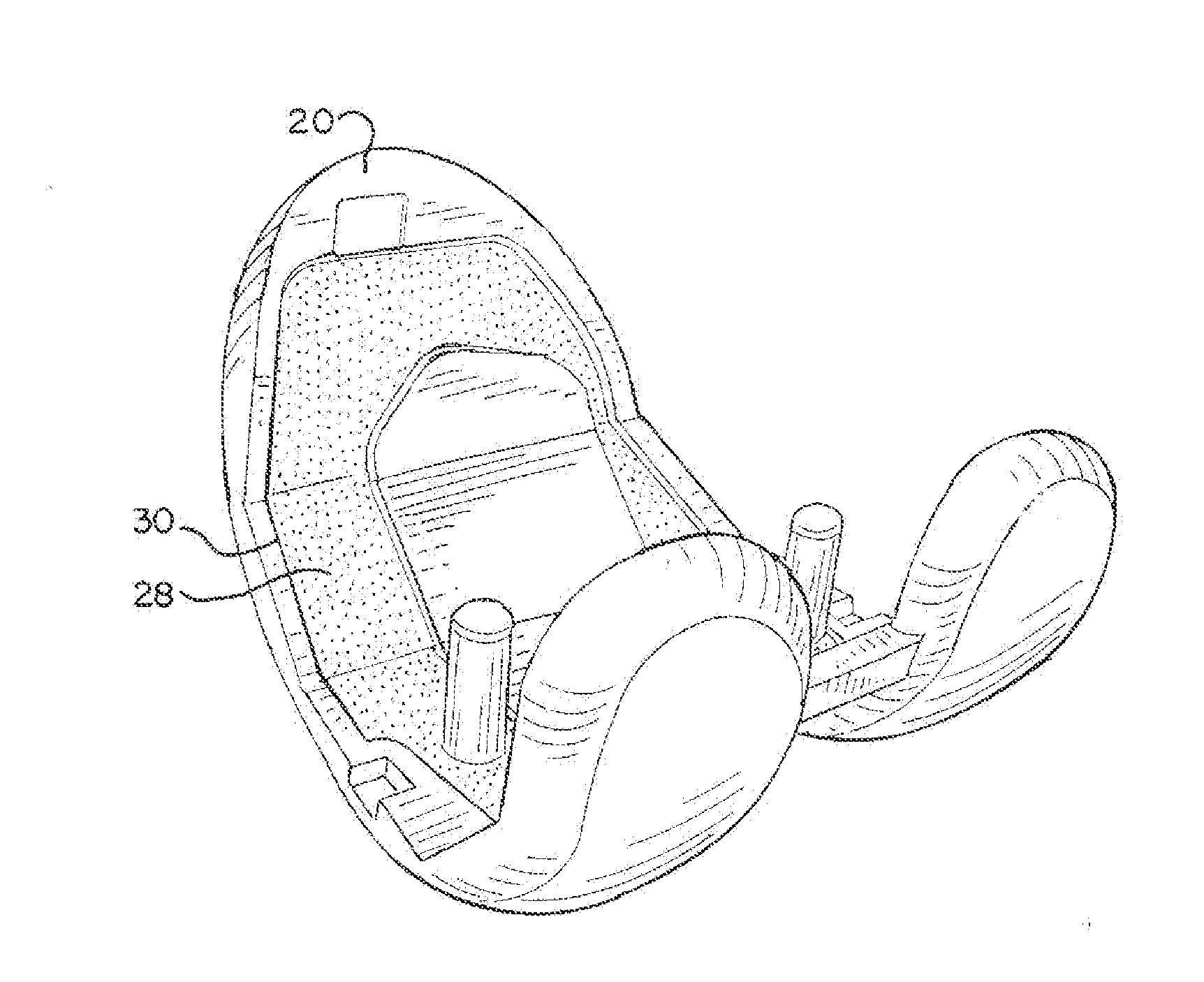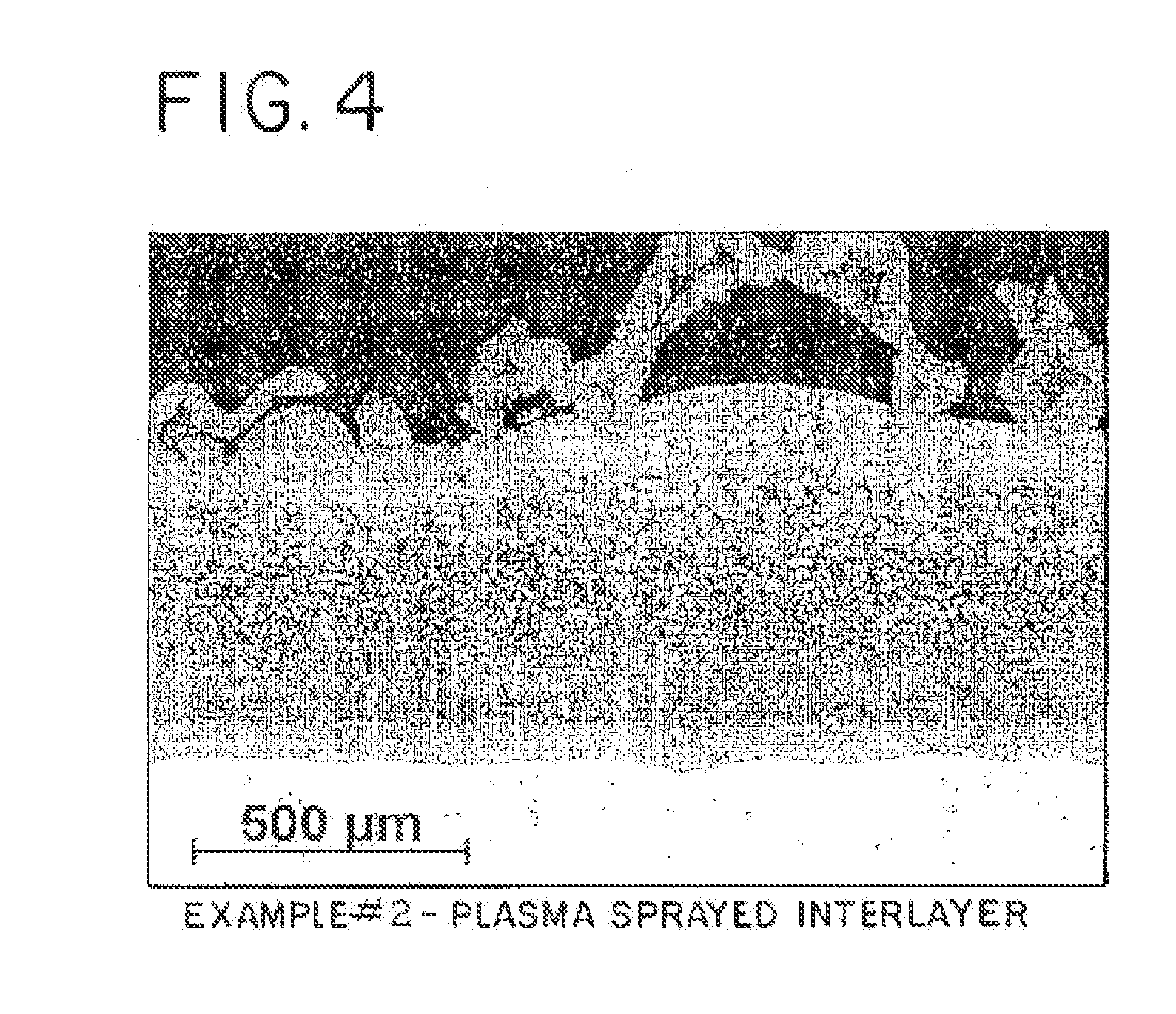Method for bonding a tantalum structure to a cobalt-alloy substrate
a technology of cobalt and alloy, applied in the field of orthopaedic implants, can solve the problems of difficult manufacturing of orthopaedic implants with porous structures, difficult bonding of separate components, and difficult bonding of these two metals together
- Summary
- Abstract
- Description
- Claims
- Application Information
AI Technical Summary
Problems solved by technology
Method used
Image
Examples
example
[0047]A comparison was made to determine if there were any differences in the bonding between constructs formed by bonding porous tantalum structures to substrates with compressible interlayers and with incompressible interlayers. The porous tantalum structures used in this comparison are available from Zimmer, Inc., Warsaw, Ind. and sold under the trademark Trabecular Metal®. Additionally, the cobalt-chromium femoral knee implants used in this comparison are similar to those shown in FIGS. 5 and 6 and are also available from Zimmer, Inc., Warsaw, Ind.
[0048]A solid, nonporous substantially incompressible interlayer sheet of titanium having a thickness of about 0.020 inches (0.51 mm) was employed in a diffusion bonding process to bond a porous tantalum structure having a thickness of about 0.045 (1.1 mm) and a porosity of about 80% to the geometrically complex surface of a femoral implant. The bonding process included placing the sheet interlayer between the porous tantalum structure...
PUM
| Property | Measurement | Unit |
|---|---|---|
| thickness | aaaaa | aaaaa |
| porosity | aaaaa | aaaaa |
| thick | aaaaa | aaaaa |
Abstract
Description
Claims
Application Information
 Login to View More
Login to View More - R&D
- Intellectual Property
- Life Sciences
- Materials
- Tech Scout
- Unparalleled Data Quality
- Higher Quality Content
- 60% Fewer Hallucinations
Browse by: Latest US Patents, China's latest patents, Technical Efficacy Thesaurus, Application Domain, Technology Topic, Popular Technical Reports.
© 2025 PatSnap. All rights reserved.Legal|Privacy policy|Modern Slavery Act Transparency Statement|Sitemap|About US| Contact US: help@patsnap.com



